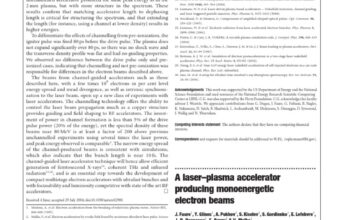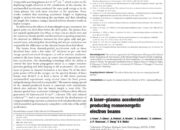The evolution of energy technology has often resembled a quest for the Holy Grail, a pursuit marked by both optimism and trepidation. Among the pantheon of emerging energy solutions, fuel cells have emerged as formidable contenders, embodying both promise and contention. This article delves into the intricate cosmos of fuel cells, exploring their mechanism, advantages, challenges, and their duality as both a friend and foe in the quest for sustainable energy.
At the heart of any fuel cell lies a simple yet profound principle: electrochemical conversion. Fuel cells operate based on the amalgamation of hydrogen and oxygen to produce electricity, water, and heat—a triad reminiscent of the sacred alchemical processes once pondered by philosophers. In this juxtaposition of elements, hydrogen acts as the fuel, while oxygen serves as the oxidant. The elegance of this process lies in its efficiency; the energy conversion is remarkably high, often exceeding that of traditional combustion methods. Herein lies the paradox: while the potential for clean energy is pristine, the sourcing and management of hydrogen can stir contention.
As an illustration, consider the spectrum of hydrogen production methods. Water electrolysis, wherein electricity is utilized to split water into hydrogen and oxygen, promises a pathway to purify hydrogen generation, particularly when harnessed with renewable energy sources like wind or solar. However, this process is not without its complexities. The sustainability of hydrogen hinges on the sources of electricity employed—the very foundation upon which the environmental accolades of fuel cells stand. It raises precipitative questions regarding the net environmental impact: is the energy accrued during fuel cell operation truly virtuous if the hydrogen genesis indulges fossil fuels?
In juxtaposition to conventional fossil fuels, fuel cells possess the capacity to significantly attenuate greenhouse gas emissions. When hydrogen combusts, it predominantly emits water vapor, a marked improvement over the carbon dioxide and pollutants emitted from traditional combustion engines. This aspect renders fuel cells an environmental friend in the grand narrative of climate mitigation efforts. Automobiles powered by fuel cells, known for their zero-emission fidelity, underscore the connectivity between advanced technology and sustainable transportation. Yet, despite their remarkable efficiency, fuel cells present an intricate landscape of challenges.
One of the paramount adversities is the cost of materials. Current fuel cell technologies typically employ precious metals such as platinum as catalysts, creating economic barriers to widespread adoption. The reliance on rare materials not only inflates costs but also invokes concerns about the sustainability of mining operations. Consequently, this reliance on scarce commodities highlights the dichotomy of innovation and resource stewardship. Alternative, more abundant catalysts are under intensive investigation, yet the transition to cost-effective and efficient materials remains a formidable frontier in fuel cell advancement.
Moreover, the infrastructure requisite for hydrogen storage and distribution constitutes another layer of complexity. Building a comprehensive hydrogen refueling network analogous to petrol stations presents logistical challenges. Existing infrastructures are predominantly tailored for oil-based products and transitioning to a hydrogen-centric framework necessitates significant investment and planning. This limitation serves as a complete foil to the hopeful narrative of fuel cells; the technological prowess is evident, yet practical implementation reveals a daunting bottleneck, transforming a potential ally into a taxing adversary.
Considering the intricacies of fuel cells, the urgency of energy storage becomes paramount, particularly as the world witnesses the rapid adoption of renewable energy sources. Fuel cells offer a potential solution to the intermittent nature of renewables, acting as storers of excess energy. However, this supposition is contingent upon breaking through the current technological and economic barriers outlined previously. Thus, the question lingers: can fuel cells transcend their limitations to evolve as an integral component of sustainable infrastructure?
The dialogue surrounding fuel cells embodies a broader narrative within the realm of energy technology. Their dichotomy renders them simultaneously allies in the transition towards a greener future, yet adversaries due to the entangled complexities that can thwart their widespread acceptance. The crux lies in innovation; as researchers tirelessly pursue improved materials and manufacturing processes, the promise of fuel cells may one day eclipse the challenges they currently face.
Moreover, societal perception plays an equally crucial role in determining the fate of fuel cells. As public awareness of the climate crisis burgeons, the appetite for innovative solutions is ripe. The question arises: will the dialogue surrounding fuel cells remain mired in skepticism, or will it burgeon into widespread acceptance? This hinges not only on technological advancements but also on effective communication of the benefits and challenges inherent to fuel cell technology.
In summation, fuel cells epitomize a fascinating conundrum within the tapestry of energy solutions. They represent the duality of advancement—capable of propelling humanity towards a sustainable future while simultaneously presenting formidable challenges. As the journey unfolds, the potential of fuel cells as steadfast allies or transient foes will significantly depend on our collective commitment to overcoming the hurdles that lie within this intricate domain of science and innovation. The saga of fuel cells is not merely a tale of technological prowess; it is a reflection of humanity’s aspiration to reconcile progress with responsibility. Through vigilant exploration and innovation, the fuel cell may yet fulfill its promise, transcending its current limitations to become a beacon in the quest for cleaner energy and sustainability.












